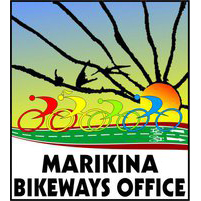
Marikina, located about 21 kilometres from Manila along the eastern border, has become a bicycle-friendly city. This was made possible because of political commitment in the form of an initiative by Mayor Bayani Fernando and its continuation by Mrs. Fernando after she succeeded him as mayor. The success of the Marikina Bikeways Network is also said to represent a win-win scenario in that it evolved from a “river rehabilitation programme”, an initial 10 kilometres of jogging paths and bikeways built along the Marikina River. This involved recovery of 220 hectares of public space formerly occupied by “illegal settlers”.
The recovered area was then developed into theme parks and playgrounds. People began coming to the water to participate in the “celebration of the city’s success in saving the Marikina River”. The majority who came used bicycles. This led to the adoption of a pilot project for a non-motorized mode as an alternative and, in some instances, a complementary mode of travel to employment centres and LRT stations.
The city’s initiative attracted the attention of the Global Environmental Facility (GEF). Their funding support led to a gradual implementation of the bikeways network. Currently, 52 kilometres of bikeways connect the city’s residential areas to the employment centres, markets, schools, government service providers and to an LRT station.
The success of the Marikina Bikeways Network appears to have resulted from a combination of the following:
- the city’s integration of the bikeways’ construction into its regular road improvements or widenings (wherever feasible) and sidewalk/drainage improvement projects, complemented by consistent implementation of traffic rules and regulations;
- bicycle safety education, information dissemination and advocacy campaigns;
- continuing recovery of all public places to increase mobility and create green spaces; and
- a GEF grant that financed 19 kilometres of the current 52 kilometres of the bikeways network.
To overcome the common barriers to bicycle use, the city has also several supporting programmes. These include:
- a loan programme for city employees;
- bicycle safety information dissemination;
- sponsorship of annual cycling competitions and bicycle advocacy events to promote public enthusiasm for cycling as a sport and public support for air quality protection; and
- building more complementary bicycle facilities, such as better bicycle traffic flows and informative signage, innovative design on bicycle lane pavement markings and installing bicycle parking and bicycle stations to enhance bicycle trips.
Case study courtesy of the UNEP Publication, Reducing Emissions from Private Cars: Incentive measures for behavioural change.